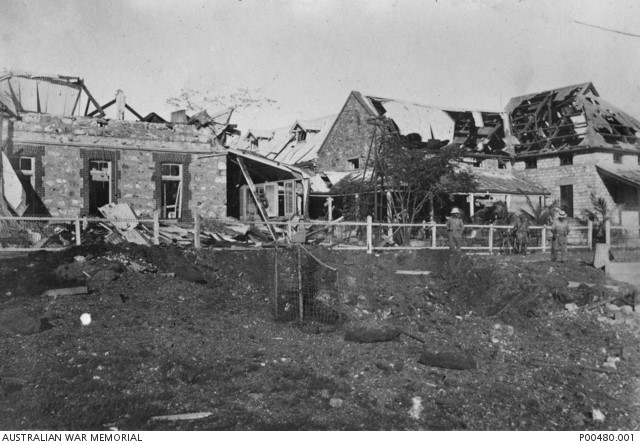Bombing of Darwin Day – 80 years since Australian came under attack

Each year on 19 February, Australia marks Bombing of Darwin Day to commemorate the first time that the Australian mainland came under direct attack during the Second World War.
Darwin was an important port and was regarded as a vital asset in Australia’s defence against Japanese Empire forces which had recently captured Singapore and were rapidly invading the then Dutch East Indies (Indonesia) to Australia’s immediate north.
Darwin came under attack by Japanese fighters and bombers on 19 February 1942, the first of many air raids that were carried out across northern Australia. The two raids on this day, separated by about 80 minutes, killed more than 250 Australian and Allied service personnel and civilians. The air raids on Darwin involved more than 240 enemy aircraft.
During the first raid, the American Destroyer U.S.S. Peary was sunk, killing 88 American sailors and wounding 13 – the greatest single loss of life on any ship attacked that day.
Further raids took place in April, June, July and November 1942 and March 1943, usually carried out by 30 to 40 aircraft. Between these large raids, smaller sorties of Japanese aircraft also carried out other operations on Darwin.
On 12 November 1943, the 64th and final air raid on Darwin occurred. Over almost two years, northern Australia had seen a total of 97 air attacks, and while these ceased, enemy air reconnaissance continued over the region for the majority of 1944.
On the 80th anniversary of the Bombing of Darwin, we remember those who died during these attacks and in defence of our nation.
Learn more about the 1942 bombing of Darwin and the other air raids the nation faced at the Department of Veterans’ Affairs Anzac Portal.
You may also wish to see a video about the Bombing of Darwin on DVA TV.
The Bombing of Darwin from those who were there
The following quotes are from video interviews conducted over several years with men who were there. You can listen to the full interviews on the Anzac Portal.
Brian Winspear AM (pictured) served as a wireless air gunner in the Royal Australian Air Force’s (RAAF) No 2 Squadron.
Brian vividly recounted the first bombing of Darwin in which he was hit by shell splinters in his eye and hand.
‘The Zeros and the dive bombers blew Hell out of Darwin,’ he said.
‘We were in a trench about fifty yards from the hangars and you could see the Japanese in their cockpits, see their faces smiling and laughing.
‘I looked up and the sun glinted on the bombs as they were falling and it was just like confetti.’
Brian recalled the air superiority of the Japanese fighters, which decimated a squadron of US Army Air Force Kittyhawks, which were in the process of landing when the air raid occurred.
‘They picked them off one by one,’ said Brian.
‘They weren’t very good pilots, they’d just learnt to fly and of course the Zeros just butchered them all.
‘Most of the pilots bailed out with parachutes but the Japanese would have pot shots at them when they were floating down.’
Don Anderson joined the Royal Australian Navy at age 17 on 11 March 1942 and his early service saw him posted to Darwin where he witnessed the aftermath of the first attack.
‘Darwin was a mess,’ he said. ‘There was not a single undamaged building in the place. The Neptune, a 10,000-ton ship, lying on its side alongside the wharf where it had been bombed. I didn’t experience the initial bombing of Darwin but… every time it was a moonlit night, the Japanese planes would come over to do some bombing.’
The late Rex Lipman AO ED OLH ONM spent time in Darwin before re-joining the 2/4th Australian Commando Squadron in Timor in December 1942. Rex spoke of the disorganisation in Darwin before and after the air raids.
‘No one was ready for anything,’ he said.
After the initial attacks, Rex’s Commando unit went hunting for Japanese soldiers who were believed to have landed on Australian soil.
‘The Commando unit went out on the Roper River, the Victoria River, and the Daly River. There was an infiltration of some Japanese round where we were hunting, we but didn’t find any. But they had been there… not in hundreds, in twos and threes.’
101-year-old Brian Winspear with Repatriation Commissioner Don Spinks AM at a commemorative service held in Darwin on 19 February 2022. Brian was serving as a wireless air gunner with the Royal Australian Air Force when Darwin was bombed. He was hit by shell splinters in the eye and hand.
